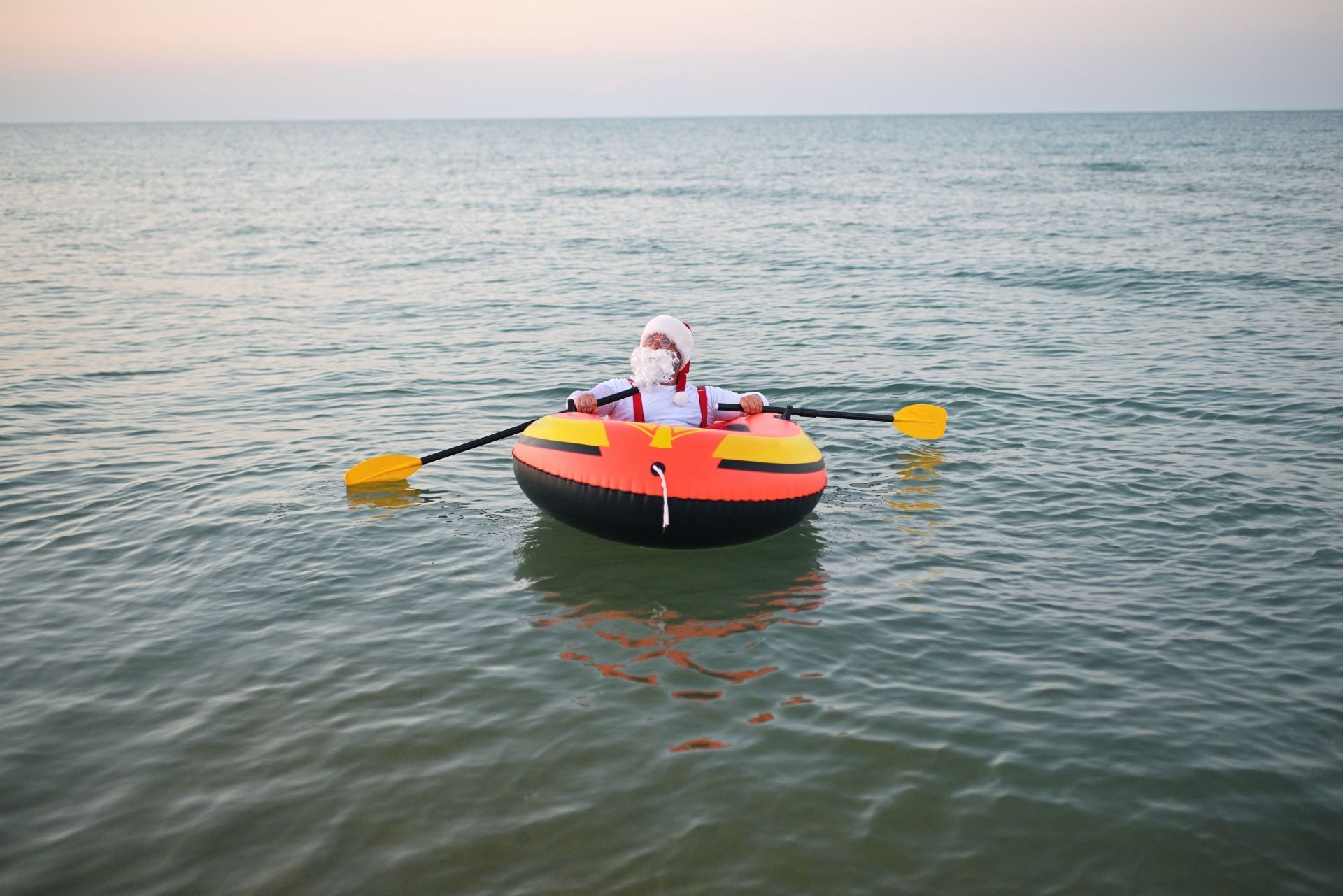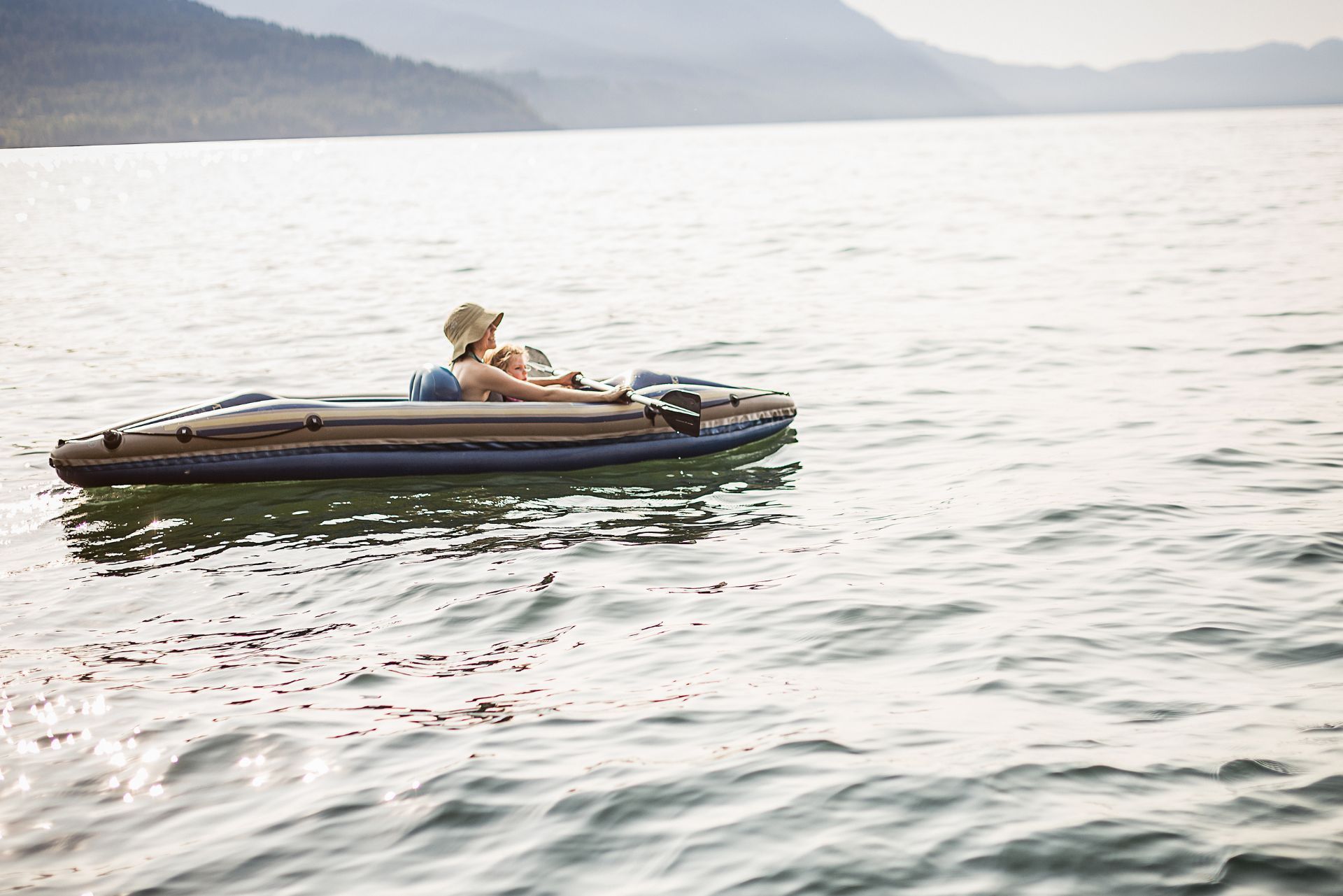Top 3 Recommended Policies

When it comes to enjoying the beautiful lakes and rivers of Colorado, having the right watercraft insurance is essential. Whether you own a boat, jet ski, or any other type of watercraft, understanding the specifics of watercraft insurance can help protect your investment and ensure peace of mind while on the water. This article will cover everything you need to know about watercraft insurance in Colorado, including types of coverage, legal requirements, and tips for finding the best policy.
Understanding Watercraft Insurance
Watercraft insurance is designed to provide coverage for various types of water vehicles, including boats, personal watercraft (PWCs), and even certain types of sailboats. Just like auto insurance, it protects you against financial loss in the event of an accident, theft, or damage to your watercraft. However, watercraft insurance can also include unique features tailored to the specific risks associated with being on the water. For instance, many policies offer coverage for environmental damage, which can be particularly important given the increasing focus on protecting marine ecosystems.
Additionally, watercraft insurance can extend beyond just the vehicle itself. Many policies also cover equipment and accessories, such as fishing gear, water skis, and even trailers used to transport your watercraft. This comprehensive approach ensures that boaters are protected not just from the loss of their vessel, but also from the loss of valuable equipment that enhances their time on the water. Understanding these nuances can help you select a policy that truly meets your needs.
Types of Watercraft Insurance Coverage
There are several types of coverage options available for watercraft insurance. Understanding these can help you choose the right policy for your needs.
- Liability Coverage: This is the most basic form of watercraft insurance and is often required by law. It covers bodily injury and property damage to others if you are at fault in an accident.
- Collision Coverage: This type of coverage pays for damages to your watercraft resulting from a collision with another vessel or object, regardless of fault.
- Comprehensive Coverage: Comprehensive insurance protects against non-collision-related incidents, such as theft, vandalism, or natural disasters.
- Medical Payments Coverage: This coverage helps pay for medical expenses for you and your passengers if injured in an accident, regardless of fault.
- Uninsured/Underinsured Boater Coverage: This protects you if you are involved in an accident with a boater who does not have adequate insurance.
In addition to these standard coverage options, many insurers offer specialized endorsements that can be added to your policy. For example, some policies may include coverage for towing and assistance services, which can be invaluable if you find yourself stranded on the water. Others may offer coverage for rental reimbursement, ensuring that you can rent a replacement watercraft while yours is being repaired. These additional features can provide peace of mind and enhance your overall boating experience.
Factors Affecting Watercraft Insurance Premiums
Several factors can influence the cost of your watercraft insurance premiums. Understanding these can help you make informed decisions when shopping for coverage.
- Type of Watercraft: The make and model of your watercraft can significantly affect your premium. High-performance models or luxury boats may come with higher premiums.
- Usage: How often and where you use your watercraft can impact your rates. Frequent use in high-traffic areas may lead to higher premiums.
- Experience: Your boating experience and safety record can also play a role. Newer boaters may face higher rates due to perceived risk.
- Location: The area where you keep your watercraft can affect your insurance costs. Regions prone to severe weather or high theft rates may lead to increased premiums.
Moreover, certain safety measures can help lower your premiums. Installing security devices, such as GPS tracking systems or alarms, can demonstrate to insurers that you are taking proactive steps to protect your watercraft. Additionally, completing a boating safety course may qualify you for discounts, as insurers often reward those who show a commitment to safe boating practices. By being aware of these factors and actively managing them, you can potentially save on your watercraft insurance costs while ensuring comprehensive coverage for your adventures on the water.

Legal Requirements for Watercraft Insurance in Colorado
In Colorado, the law does not mandate watercraft insurance for all types of watercraft. However, there are specific regulations that boat owners should be aware of to avoid legal issues while enjoying their time on the water.
State Regulations
While Colorado does not require all boaters to carry insurance, certain types of vessels, particularly those used for commercial purposes, may have specific insurance requirements. Additionally, if you finance your watercraft, your lender may require you to have insurance coverage. It's also important to note that even if insurance isn't legally required, it can provide peace of mind against potential liabilities, such as accidents or damages caused to other vessels or property.
Registration Requirements
All motorized boats and personal watercraft must be registered with the Colorado Parks and Wildlife. Registration is essential for legal operation on state waters, and having insurance can help protect your investment while ensuring compliance with state laws. Furthermore, the registration process involves providing proof of ownership and may require a safety inspection, which highlights the importance of maintaining your watercraft in good condition. This not only ensures safety on the water but also can contribute to lower insurance premiums, as insurers often consider the condition and safety features of a vessel when determining coverage rates.
Liability Considerations
While navigating the waters of Colorado, boaters should also be aware of liability considerations. In the event of an accident, the financial repercussions can be significant, especially if injuries occur or property damage is involved. Liability insurance can cover these costs, which can include medical expenses, legal fees, and property repairs. Additionally, many marinas and docking facilities may require proof of insurance before allowing access to their services, reinforcing the importance of having adequate coverage even when not legally mandated.
Types of Coverage
When considering watercraft insurance, it's essential to understand the various types of coverage available. Comprehensive coverage protects against non-collision incidents such as theft, vandalism, or natural disasters, while collision coverage specifically addresses damages resulting from accidents on the water. Additionally, uninsured or underinsured boater coverage can be crucial, as it provides protection if you are involved in an accident with a boater who lacks sufficient insurance. Understanding these options can help you tailor your policy to fit your specific needs and ensure that you are adequately protected while enjoying the beautiful lakes and rivers of Colorado.
Choosing the Right Watercraft Insurance Policy
Finding the right watercraft insurance policy can seem daunting, but understanding your options and needs can simplify the process. Here are some tips to help navigate the selection process.
Assessing Your Needs
Before shopping for insurance, assess your specific needs. Consider the type of watercraft you own, how often you use it, and the typical conditions in which you operate. This will help you determine the coverage levels that are appropriate for your situation. For instance, if you own a high-performance speedboat that you frequently take out on open waters, you may require more comprehensive coverage compared to a small kayak used for leisurely paddling on calm lakes. Additionally, think about whether you plan to store your watercraft in a marina or at home, as this can influence your insurance needs and potential risks.
Comparing Quotes
Once you have a clear understanding of your needs, start comparing quotes from different insurance providers. Look for policies that offer the coverage you need at a competitive price. Be sure to read the fine print and understand any exclusions or limitations in the policy. It's also wise to inquire about discounts that may be available, such as those for safety courses or bundling multiple policies. Remember that the cheapest option isn't always the best; consider the reputation of the insurer and their customer service ratings, as these factors can significantly impact your experience should you need to file a claim.
Consulting with an Insurance Agent
Working with an insurance agent who specializes in watercraft insurance can provide valuable insights and help you navigate the complexities of various policies. An experienced agent can help you find the best coverage options tailored to your needs and budget. They can also assist in understanding the nuances of different types of coverage, such as liability, collision, and comprehensive insurance, ensuring you are adequately protected against potential risks. Furthermore, a knowledgeable agent can keep you informed about any changes in regulations or industry standards that might affect your coverage, allowing you to make proactive adjustments to your policy as needed.
Common Exclusions in Watercraft Insurance Policies
Understanding what is not covered by watercraft insurance is just as important as knowing what is included. Familiarizing yourself with common exclusions can prevent unexpected surprises in the event of a claim. Being proactive about these exclusions can save you time, money, and stress when you need to file a claim.
Typical Exclusions
Most watercraft insurance policies have certain exclusions that policyholders should be aware of. Some common exclusions include:
- Wear and Tear: Damage resulting from normal wear and tear or lack of maintenance is typically not covered. This means that regular upkeep, such as cleaning, engine checks, and hull inspections, is essential to ensure your watercraft remains in good condition and to avoid potential out-of-pocket expenses.
- Intentional Damage: Any damage caused intentionally or through reckless behavior is usually excluded from coverage. This exclusion emphasizes the importance of responsible boating practices and the need to adhere to safety regulations to protect not just your vessel but also others on the water.
- Operating Under the Influence: Accidents that occur while operating the watercraft under the influence of drugs or alcohol are generally not covered. This exclusion serves as a reminder of the serious legal and safety implications of boating while impaired, which can lead to severe consequences beyond just insurance issues.
Understanding Policy Limits
Every insurance policy has limits, which are the maximum amounts the insurer will pay for a covered loss. Understanding these limits is crucial, as they can vary significantly between policies. Make sure to choose limits that adequately protect your investment and personal liability. Additionally, it’s wise to consider factors such as the value of your watercraft, potential repair costs, and any personal belongings on board that may also need coverage.
Moreover, some policies may include specific sub-limits for certain types of coverage, such as personal property or fishing gear, which can further impact your overall protection. It’s advisable to review these details carefully and discuss them with your insurance agent to ensure you have a comprehensive understanding of your policy. By doing so, you can make informed decisions that align with your boating lifestyle and financial situation, ultimately providing peace of mind while enjoying your time on the water.

Filing a Claim: What to Expect
In the unfortunate event of an accident or damage to your watercraft, knowing how to file a claim can make the process smoother. Here’s what to expect when filing a claim.
Steps to File a Claim
Filing a claim typically involves several steps:
- Contact Your Insurance Provider: Notify your insurance company as soon as possible after the incident. They will provide you with specific instructions on how to proceed.
- Document the Incident: Take photos of the damage, gather witness statements, and collect any other relevant information that may support your claim.
- Complete the Claim Form: Fill out the necessary claim forms provided by your insurance company, ensuring all information is accurate and complete.
- Follow Up: Stay in contact with your insurer to track the progress of your claim and provide any additional information they may require.
What Happens Next?
After filing your claim, the insurance company will investigate the incident. They may send an adjuster to assess the damage and determine the amount they will pay for the claim. This process can take some time, so patience is essential. Once the claim is approved, you will receive compensation according to the terms of your policy.
During the investigation, it’s crucial to remain cooperative and responsive to any requests from your insurance company. They may need further documentation or clarification regarding the incident, and providing this information promptly can help expedite the process. Additionally, if there are any disputes regarding the claim amount or the cause of the damage, your insurer may engage in negotiations, which could involve discussions about liability and coverage limits.
It's also important to familiarize yourself with the specific terms and conditions of your insurance policy, as they can vary significantly between providers. Understanding your coverage limits, deductibles, and any exclusions can help set realistic expectations for the claims process. If you find yourself overwhelmed or unsure about any part of the process, consider seeking assistance from a professional, such as an insurance agent or a legal advisor, who can provide guidance tailored to your situation.
Tips for Lowering Your Watercraft Insurance Premiums
Watercraft insurance can be a significant expense, but there are several strategies to help lower your premiums without sacrificing coverage.
Bundle Your Policies
Many insurance companies offer discounts for bundling multiple policies, such as home and auto insurance. If you already have other insurance with a provider, consider adding your watercraft insurance to qualify for potential savings.
Take a Boating Safety Course
Completing a boating safety course can not only enhance your skills but may also qualify you for discounts on your insurance premiums. Many insurers offer lower rates for policyholders who have completed recognized safety courses.
Increase Your Deductible
Choosing a higher deductible can lower your premium. However, it’s essential to ensure that you can afford the deductible amount in the event of a claim. Weigh the potential savings against the risk of higher out-of-pocket costs.
Conclusion
Watercraft insurance is a vital aspect of responsible boating in Colorado. Understanding the types of coverage available, legal requirements, and how to choose the right policy can help protect your investment and provide peace of mind while enjoying the state's stunning waterways. By taking the time to assess your needs, compare quotes, and stay informed about common exclusions and claims processes, you can navigate the world of watercraft insurance with confidence. Whether you’re a seasoned boater or just starting, having the right insurance is an essential part of your boating experience.
Contact Us
Phone
Location

